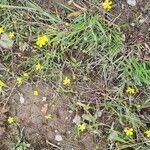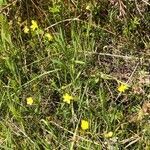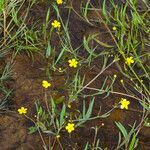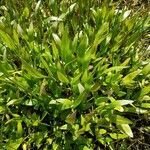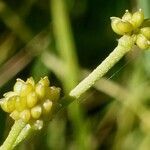Perennial, glabrous or with sparse appressed hairs; roots all fibrous. Stems slender to stout, erect or suberect, (15)-30-60 cm tall. Lvs simple, entire to shallowly serrate or dentate. Basal lvs lanceolate to ovate, acute, abruptly cuneate or truncate at base, 2-8 × 1-3 cm; petioles erect, 5-10 cm long. Cauline lvs becoming smaller, linear to lanceolate, cuneate at base, shortly petiolate to subsessile. Fls (1)-3-10-(25) per stem, 10-15 mm diam. Pedicels erect, sulcate, (2)-3-6 cm long. Sepals 5, sparsely covered in appressed hairs, weakly recurved, obtuse, 2-3.5 mm long. Petals 5, yellow, obovate-cuneate, truncate, 5-8 × 3.5-6 mm; nectary single, c. 1 mm from petal base, covered by a broad obtuse scale. Receptacle glabrous. Achenes 25-40, glabrous, hardly flattened, weakly bordered, ovoid, smooth; body 1.5-2 × c. 1 mm; beak c. 0.1 mm long.
For description of taxon occurring in Australia see Ranunculus flammula L. subsp. flammula.
